SIOUX FALLS, South Dakota—Mike Lindell, the MyPillow CEO, has been talking about his three-day “cyber forensic symposium” for months. When we last spoke, he told me it was going to be the biggest event in the world. Many, many hundreds of people from across the country would be in attendance. Secretaries of state, attorneys general, governors, cybersecurity experts, and media from across the political spectrum would fill a stadium and watch in near disbelief as he convinced all of the nonbelievers that they were wrong about the integrity of the 2020 presidential election. And finally, with his new evidence, everyone in attendance would know Donald Trump had won the election and that as soon as the morning of August 13, the result would be overturned and Trump reinstated.
Like many of Lindell’s recent fantasies, the symposium he envisioned never materialized. The stately arena that was going to host this huge crowd was actually just a modest event space that held at most 200 people, with an adjacent gun range and a small combined lounge and bar called “Club Lobo.”
Throughout the event—which took place last Tuesday through Thursday—Lindell, sometimes accompanied by his “experts,” sometimes alone, sat at a glass table on a makeshift stage. Attendees sat on plastic folding chairs surrounding the stage. Certain guests had special seats, with handwritten “reserved” signs taped onto the back of bar stool chairs. The audience, although smaller than expected, seemed for the most part engaged, almost riled up. At one point an attendee, apropos of nothing, asked if it was time to “bring in the military to stop the coup.”
The event many were promised would be the moment Lindell shared his “PCAPs” with the world. Looking at packet captures is a standard networking way to view traffic over the internet. We provided a comprehensive explanation of PCAPs in a Dispatch Fact Check: “Traffic over the internet is sent as packets of information. They aren’t encrypted, necessarily, but they are encoded, because they don’t need to be human-readable while they’re in transit.”
Lindell had claimed multiple times that the PCAPs he had collected alone would demonstrate the widespread fraud he’d been claiming for months, and would be enough to convince the Supreme Court to overturn the election once and for all— unanimously. The basic idea of Lindell’s PCAP claim is that he has a team of experts who gathered internet traffic from foreign computers to U.S. counties, where foreign computers came into contact with computers that are meant to provide election results. This all supposedly pointed to data that show a system intrusion that changed votes. And yet there were no PCAPs. In fact, all we got were a series of teasers of various pieces of “evidence” that never materialized. The whole event seemed like an effort to distract attendees with graphics, numbers, slideshows, and tangents, without ever sharing anything at all.
Lindell told Salon that he was certain a billion people would tune in to watch, and that secretaries of state and governors would be in attendance, and that maybe even “crooked” Brian Kemp and Doug Ducey—the Republican governors of Georgia and Arizona, respectively—would sit front and center, ashamed they had been so wrong about the election. This wasn’t the case. We got some state representatives, diehard Trump fans and adjacent Lindell fans, media, and cybersecurity professionals, some described as “experts” by Lindell, and some that truly were credentialed cybersecurity experts that came with media outlets or on their own. Steve Bannon was there, too.
The crowd got noticeably smaller each day of the event, going from about 200 on the first day to maybe 100 by the end of the third. The event was designed so that attendees never needed to leave from 9 a.m. to almost 9 p.m. each night. Breakfast, lunch, and dinner (which curiously started at 4:30 p.m.) were served daily.
Even if you came to the event with deep and deserved skepticism of Lindell and his claims—and it would have been hard for anyone paying careful attention to come without it—it really was hard to leave. At every moment, we were left with a cliffhanger: A “big announcement” at 7 p.m., “critical information” that would become public at some undisclosed point, “evidence” that is “bigger than the PCAPS” to be announced at noon. Three big announcements that might possibly contain the evidence we were waiting for, and yet, we were told nothing. There were graphics, and numbers, and claims of “forensic” images that were designed to make the audience feel like they were seeing something groundbreaking, but perhaps were simply not sophisticated enough to understand. And, so the only thing to do was to trust the experts.
Lindell still has his supporters, but it seems that even people who are certain the election was stolen and felt enthusiastic about the symposium could never explicitly vouch for his supposed PCAP data. Lindell, in many eyes, carried with him the hopes of people desperate to overturn the election, but did he have the data that would overturn the election on August 13? This couldn’t be said for certain.
At one point during a panel, one of Lindell’s “experts” said that election fraud is an issue of “smoke and fire.” The implication, of course: where there is smoke, there must be fire. But where is the fire?
It’s an answer we never got, and the reason is simple. There is no fire.
I spoke to Harri Hursti, a computer programer, hacker, election security expert, and the subject of the 2020 HBO documentary, Kill Chain: The Cyber War on America’s Elections, which looked into security issues with voting technology. He put it simply: “This is a big fat nothing.” Hursti said he came for a single purpose: “There had been claims that the election results had been wrong and there are more accurate results, and those claims are backed by packet captures from all 50 states,” he explained. “So I came to see that evidence and analyze it.”
Hursti, along with a group of other credentialed cybersecurity experts, spent an entire week building the tools to analyze the supposed PCAPs. “But we didn’t get a single thing we were promised,” he said.
Hursti called the whole experience “extremely frustrating.” He said he saw no evidence to support any of Lindell’s claims, adding that this isn’t a matter of personal opinion, but rather the consensus of all the cyber experts (Lindell claims there were 40) who were given access to the alleged PCAP files.
Douglas Jones, an associate professor of computer science at the University of Iowa, who attended the symposium as an election security expert on behalf of The Dispatch, further explained why he doubted the PCAPs ever existed: “The only place you could capture all the packets between China and election offices around the US is at the NSA monitoring points on the US border,” he noted. “Leaking of any packet data from those monitoring points would be a federal crime.”
There were certainly no PCAPs, but there was also no substantive proof of any kind that might even remotely point to a stolen election.
The mornings of the symposium began the same way. Lindell got on stage, voice hoarse from shouting the day before, and told the audience that the media had “put out another hit job.” The “hit job” announcement was often followed by advice for journalists which, he said one morning, was that journalists “should get on their hands on knees and pray.”
More than once Lindell began the day with an announcement of an “attack” of some kind or a “threat to the data streams” that Lindell insinuated might be the work of Antifa. There were multiple claims that “radical folks” were attempting to infiltrate the event. They were never identified or found.
Lindell also claimed that he was physically attacked after he got back to his hotel one evening and that Mesa County clerk Tina Peters’ office was raided.* The announcements were frenzied and disjointed, then followed by morning prayers, the pledge of allegiance, and the national anthem. At some point we would watch and rewatch a film full of debunked information, heavily focused on conspiracy theories involving George Soros. The symposium did not seem to adhere to a particular schedule, but was consistent in other ways. Most notably, the constant technical issues that even a cyber symposium with a room full of Lindell’s “experts” could not seem to overcome, panels interspersed with tangential monologues from Lindell, and alleged “evidence” that had been previously debunked.
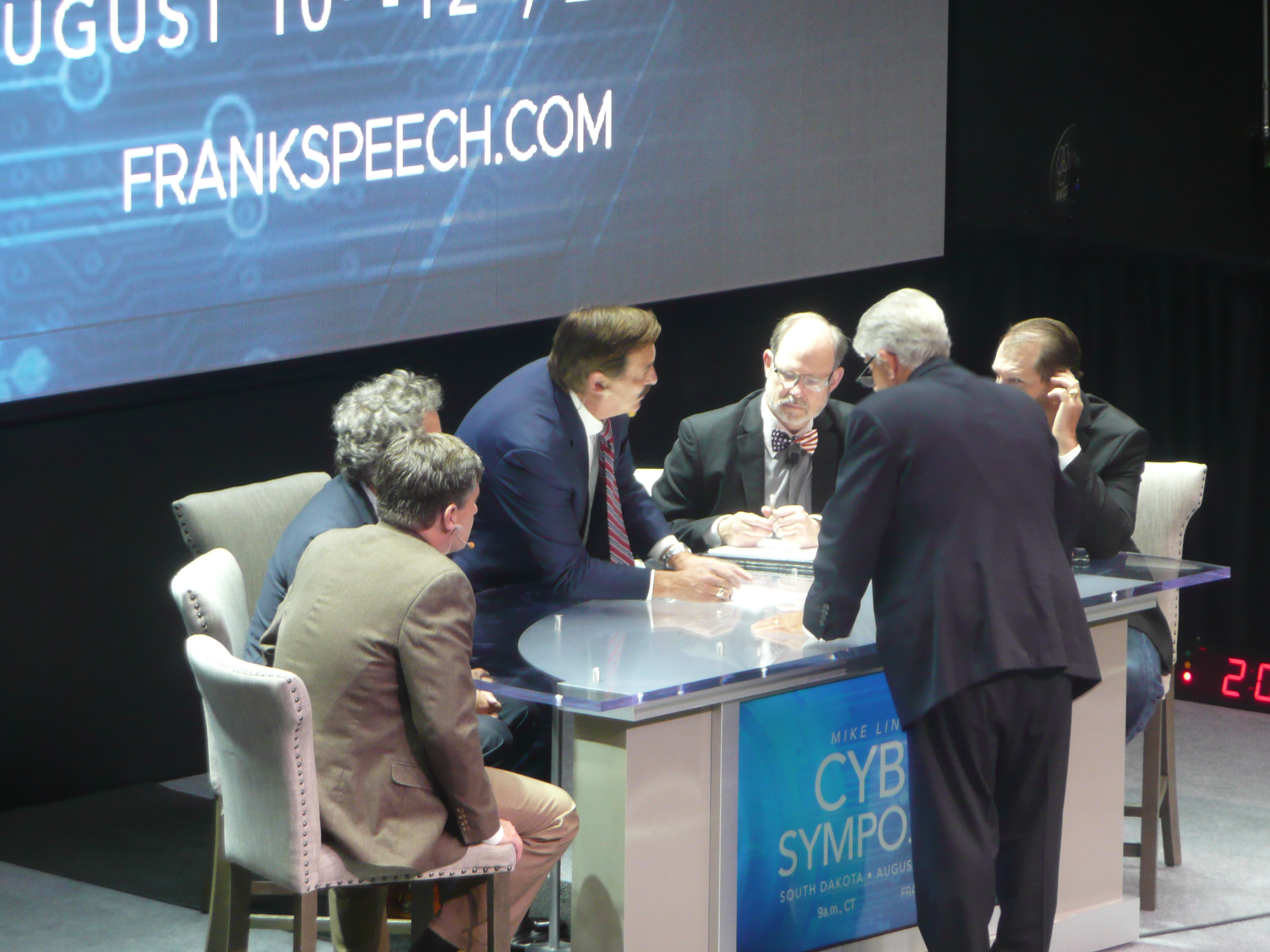
On the second day of the symposium, Dr. Douglas G. Frank, who has a Ph.D. in chemistry and appeared as an “expert” in Lindell’s Absolute Interference video, was the first to announce that he would share something “bigger than PCAPs.” The big reveal was left unnamed, but Ronald Watkins, administrator of the message board 8kun, suddenly appeared onscreen via video conference. After about an hour of technical difficulties, we were told that the big reveal was upon us: “forensic images” of a Mesa County election management system from before and after a Dominion software update. The dark implication: After the Dominion update, votes may have been changed. The experts on stage and Watkins had apparently never seen the images before, and looked perplexed by what they’d been presented.
Jones explained that there is a lot of publicly available information that may have helped the experts learn about Dominion’s election management system and how to hone in on relevant files. Instead, though, we heard someone on stage ask if “this is a Windows system?” There are bills of material in all the states that list the components of the machines, so this would be easy enough information to find, Jones noted. “If you do any homework on the Dominion management system, you’d find out what version of Windows Dominion uses and in each state what machines they use,” he said. “It’s just a Google search away.”
Instead, we watched as Watkins and two “experts” on stage projected their computer screen and explored the files stored on the alleged “forensic images.” Occasionally, someone on stage would point out something “suspicious.” A technology “expert,” for example, pointed out that one “forensic” image contained the term “ranked choice voting.” The expert looked at the crowd and asked if Colorado uses ranked choice voting. Someone from the audience said that Colorado does not use ranked choice voting, which for the experts on stage was evidence of something suspicious.
To Jones, this was not only not evidence of fraud, it wasn’t particularly suspicious at all. Because the election management system supports all styles of voting allowed in the United States, Jones explained, it’s no surprise there would be a stub for ranked choice voting in the system, even if it were unused in a particular state.
Watkins and the “experts” also noticed that some (unspecified) log files that appeared on the earlier system image were no longer visible after the software update. The insinuation, Jones said, was that “the record deletion was criminal, that the deleted log file was significant, and that Dominion technicians were engineering this deletion on every system they touched for a similar upgrade nationwide.” An implausible scenario with no evidence to support their suppositions.
What’s more, Hursti said that the “forensic images” were actually two completely different images. “You have no way of making a claim that something was deleted because [the images] actually have nothing in common,” he said. “They are fundamentally different, so it is like comparing apples to oranges. ”
The Mesa forensic image episode lasted more than an hour, and it revealed nothing. It almost seemed like the tactic was to wear the audience down with complicated looking images and technical explanations that didn’t amount to anything.
Later, we were given another lengthy presentation on fraud using “open source intelligence” and “public records” from Seth Keshel, who identifies himself as a former Army captain. Keshel claimed that he had “10 irrefutable points that prove the fraud of the 2020 election.” Keshel showed graphs of trends in voter registration that he claimed should correlate with election outcomes.
But again, the “evidence” didn’t hold up: “Normally, when one party’s registrations go up, the other goes down, except when the population grows,” Jones noted. “[Keshel] acted as if voter registrations ought to have momentum, and a trend in one four-year period ought to continue into the next. He consistently ignored the ability of Trump to energize both supporters and opponents, driving up registrations among both Democrats and Republicans, drawing from the uncommitted and the previously non-participating.”
Evidence seemed almost non-existent, but some Lindell supporters, despite never having seen the evidence and despite being careful not to explicitly vouch for the data, still believed in Lindell’s cause. It seemed that Lindell was merely a stand-in for the belief that the election was stolen, and that the particularities of Lindell’s “evidence” was never really the point.
Patrick Holbeck, a former Michigan state senator, said he came to the symposium because he has both the technical and policy expertise and wants to help people understand “what really happened.” I asked Holbeck the same question I asked Lindell a couple of months ago: If Lindell already had the evidence that shows with “100 percent certainty” that the election was stolen, which he claimed he did in his four videos, why are we at this symposium at all?
Holbeck, just like Lindell, told me the media is to blame. When I asked him more specifically about Lindell’s PCAP data, Holbeck said that “it gets into a case of is it absolutely ruled out.” Holbeck said he couldn’t prove Lindell’s data because he “doesn’t have the skillset to do that.” He thinks Lindell’s evidence is “only one piece of the evidence pie,” and the issue of how to analyze that data is a big one.
I asked Holbeck a more basic question: Had he seen Lindell’s data? He paused and then said that he “thinks” he has, but “he can’t say for sure,” because he “is not skilled enough to understand” what he’s looking at. The most obvious issue here is that if Holbeck, who claims to have technical expertise, can’t understand the data, how will America understand it?
Holbeck never answered the question, but did say that “Mike is very confident in the integrity of the data,” and that he has “no reason to doubt Mike on the integrity of the data.” But he added that this doesn’t mean “we shouldn’t ask tough questions.”
I also spoke to Jerrod Sessler, Washington Republican congressional candidate, and asked him why Lindell waited so long to reveal this “undisputed” evidence. Sessler admits that he has been asking himself the same thing, and that perhaps “the information wasn’t obvious, or maybe not readily available a few months ago.” He described Lindell’s data as “a needle in a haystack,” and that “you have to believe that God led him to that, to start unraveling.”
Sessler also believed the symposium would have a positive outcome. Lindell said Trump would be reinstated on August 13, the morning after the symposium. But that date has come and gone, of course, and Trump is still not the president. But it seems like that was never the goal for Sessler anyway. He’s hoping leaders will just say with more confidence that we need to dig into the election even more. This symposium, in his eyes, is only a single domino “in a long string of dominoes.”
No one in attendance we spoke to had seen the PCAPs or could say with certainty that the PCAP evidence was legitimate.
As the event wore on, the discussion of PCAPs got quieter and quieter. During the first two days of the symposium there were three television screens that displayed some kind of fast-moving data. The data was never confirmed, but it was thought to be some of the PCAP data. Hursti called the data “meaningless.” The “data” played on a loop throughout those first two days, but by day three, it was replaced with images of American flags. Lindell, who made fewer and fewer appearances toward the end of the symposium, seemed to be distancing himself from his PCAPs also.
The event came to an anti-climactic close. There was no word on the PCAPs, no mention of how soon Trump would be reinstated and how such a process would even work. And yet Lindell and his team of experts persisted. They continually ignored the tough questions with numbers and graphs and technical terms that didn’t amount to much. Discussions of “smoke and fire” continued too. One attendee earnestly asked an expert on stage if he could help him “find the smoke” in his state. Where was “the smoke” and how could he convince people of it? He never got a clear answer.
The symposium is over, and Joe Biden is still president. The Supreme Court has not been unanimously convinced of a fraudulent election. In fact, very little has changed. Lindell seems to have conned people looking to believe what he was selling.
It’s unclear where Lindell will go from here. It’s unclear there’s anywhere else to go. No more to prove. No more evidence to promise. Talk of Lindell’s “evidence” disappeared quietly and unceremoniously. Perhaps that’ll be Lindell’s fate, too.
*Correction, August 16: The article originally stated that Mike Lindell claimed that Tina Peters’ home was raided. He actually claimed that her office was raided.
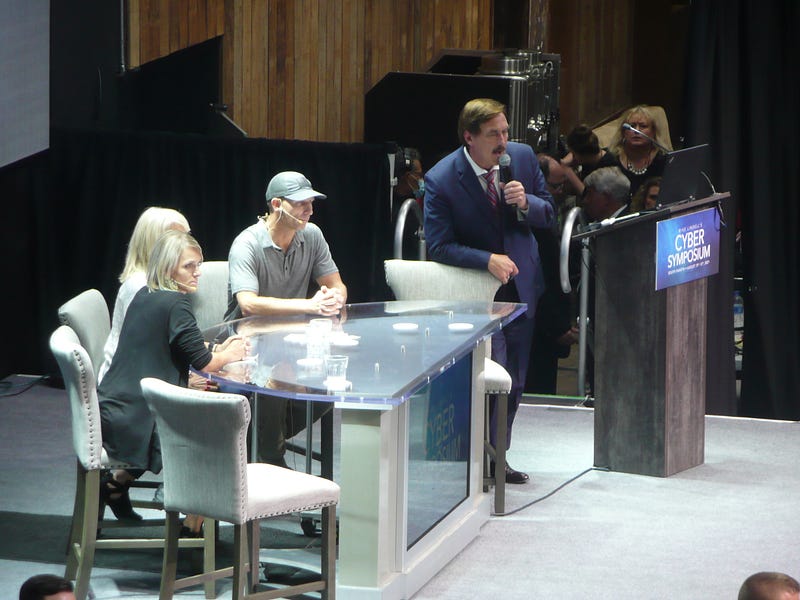


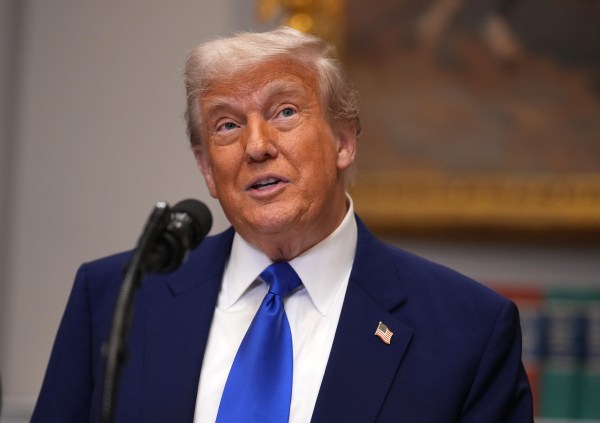
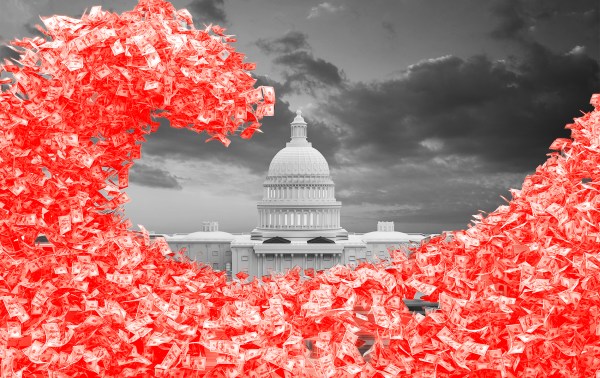
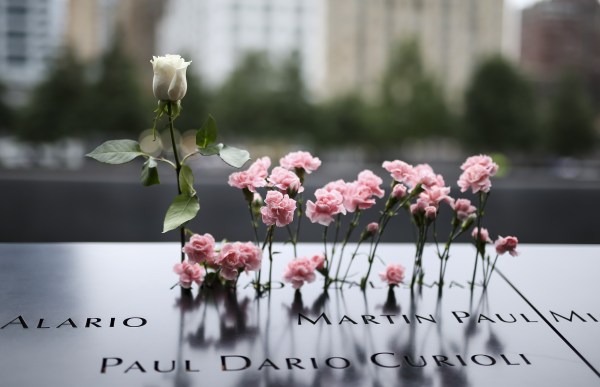

Please note that we at The Dispatch hold ourselves, our work, and our commenters to a higher standard than other places on the internet. We welcome comments that foster genuine debate or discussion—including comments critical of us or our work—but responses that include ad hominem attacks on fellow Dispatch members or are intended to stoke fear and anger may be moderated.
With your membership, you only have the ability to comment on The Morning Dispatch articles. Consider upgrading to join the conversation everywhere.